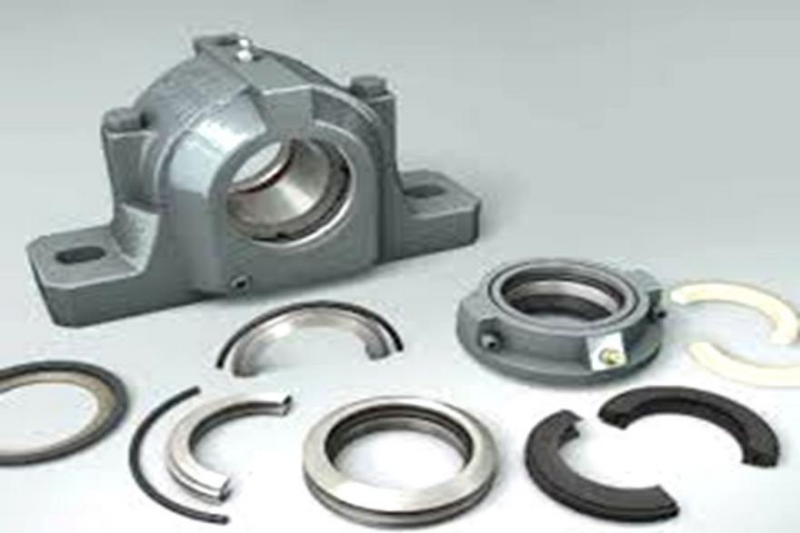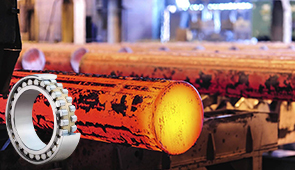A Comprehensive Guide to Installing Plummer Blocks Safely
1 Introduction to Plummer Blocks
Plummer blocks are a crucial component in various industrial machinery and equipment.
Plummer blocks are specialized bearing housings designed to provide support and secure placement for bearings on rotating shafts. Their correct installation is paramount to the smooth operation and longevity of machinery. Whether you are a seasoned engineer or a novice technician, understanding how to install plummer blocks safely is essential.
2 Understanding Plummer Block Components
To install plummer blocks safely, it’s crucial to have a deep understanding of their components and construction.
Breakdown of Plummer Block Parts:
Plummer blocks consist of several essential components that work together to support bearings on rotating shafts. These components include:
| Bearing Housing | This is the main body of the plummer block, designed to hold the bearing securely. It typically has holes for mounting and aligning with the shaft. |
| Bearing | The bearing is the rolling element that carries the load and allows for smooth rotation. It fits snugly inside the housing. |
| Seal | Plummer blocks often feature seals to protect the bearing from contaminants and prevent lubricant leakage. |
| baseplate | The baseplate serves as the foundation for the plummer block assembly. It is attached to the machine or structure. |
| Mounting Bolts | Bolts are used to secure the plummer block to the baseplate and shaft. |
Materials Used in Manufacturing:
The choice of materials for plummer blocks is critical to their performance and durability. Common materials include cast iron, ductile iron, and various types of steel. Each material has its own set of advantages and is selected based on the specific requirements of the application.
Quality Standards and Specifications:
Manufacturers adhere to industry standards and specifications when producing plummer blocks. These standards ensure that the components meet certain quality and performance criteria. It’s essential to select plummer blocks that conform to recognized standards to ensure the safety and reliability of your machinery.
By understanding the components, materials, and standards related to plummer blocks, you can make informed decisions when it comes to their selection and installation.

3 Preparation for Installation
Before diving into the actual installation process of plummer blocks, it is imperative to be well-prepared.
Safety Measures and Equipment:
The safety of personnel involved in the installation of plummer blocks is of utmost importance. Always adhere to safety protocols and provide your team with the necessary protective gear, including gloves, safety goggles, and helmets. Ensure that the work area is well-lit and free from any obstructions that could lead to accidents.
Having the right equipment on hand is crucial for a smooth installation process. This includes tools such as torque wrenches, alignment tools, and lifting equipment. Using the correct tools not only ensures the safety of the personnel but also contributes to the accuracy of the installation.
Inspection of Bearings and Housings:
Before proceeding with the installation, it is essential to inspect the bearings and housings thoroughly. Check for any defects or damage that may have occurred during transportation or storage. If any issues are detected, they should be addressed before installation to prevent future complications.
Ensure that the bearings are the correct size and type for your application. Consult the manufacturer’s specifications and recommendations to make sure you have the right components.
Lubrication Requirements:
Proper lubrication is crucial for the long-term performance of plummer blocks. Lubricants reduce friction, dissipate heat, and prevent premature wear and tear of bearings. Refer to the manufacturer’s guidelines for the recommended lubrication type and quantity.
During the preparation phase, ensure that you have the appropriate lubrication tools and materials readily available. Properly lubricate the bearings and housings according to the manufacturer’s instructions before proceeding with the installation.
By focusing on safety measures, equipment readiness, thorough inspections, and lubrication requirements during the preparation phase, you set the stage for a successful and secure installation of plummer blocks.
4 Step-by-Step Installation Process
Now that we have thoroughly prepared for the installation of plummer blocks, let’s delve into the step-by-step process to ensure a safe and effective installation. Each stage of the installation is critical to the long-term performance of your machinery, so careful attention to detail is essential.
| 1. Mounting the Bearing | The first step in installing plummer blocks is mounting the bearing itself. Begin by ensuring that the bearing is clean and free from contaminants. Gently place the bearing into the housing, taking care to align it properly. Pay close attention to the orientation of the bearing, ensuring that it is facing the correct direction.
Pro Tip: Applying a thin layer of lubricant to the bearing before mounting can aid in the smooth installation and reduce friction. |
| 2. Securing the Housing | once the bearing is in place, it’s time to secure the housing. Position the housing over the bearing and align it with the mounting holes on the baseplate or structure. Make sure the housing is level and properly seated. Insert the mounting bolts and hand-tighten them to secure the housing in position. |
| 3. Aligning the Shaft | Achieving proper shaft alignment is crucial for the smooth operation of your machinery. Before finalizing the installation, carefully align the shaft with the bearing. Use alignment tools to ensure that the shaft is perfectly aligned with the bearing and housing. This step is essential for reducing wear and vibrations. |
| 4. Tightening Procedures | The final step in the installation process involves tightening the mounting bolts securely. Gradually tighten the bolts in a crisscross pattern to distribute the load evenly. Refer to the manufacturer’s specifications for the recommended torque values, and use a torque wrench to achieve the correct tightness. Over-tightening can lead to damage, so precision is key.
Pro Tip: Periodically check the tightness of the bolts during the initial operation and after the machinery has run for a while. This helps ensure that the plummer blocks remain securely in place. |
By following these step-by-step procedures, you can install plummer blocks safely and effectively. Proper installation not only extends the life of your equipment but also minimizes the risk of breakdowns and costly repairs. In the next section, we will explore common mistakes to avoid during the installation process, helping you achieve even greater success with your machinery.
5 Common Installation Mistakes to Avoid
In our comprehensive guide to installing plummer blocks, it’s essential to address some of the common installation mistakes that can lead to operational issues and premature wear. By being aware of these potential errors and their consequences, you can take proactive steps to ensure a successful installation.
Potential Errors and Their Consequences:
| Improper Bearing Alignment | Failing to align the bearing correctly with the shaft can result in increased friction, heat generation, and accelerated wear of both the bearing and the shaft. Misalignment can lead to vibrations, noise, and reduced machinery efficiency. |
| Insufficient Lubrication | Neglecting to lubricate the bearing adequately can lead to friction, overheating, and eventual bearing failure. Inadequate lubrication affects the overall performance and longevity of the plummer blocks. |
| Over-Tightening Mounting Bolts | Applying excessive torque to the mounting bolts can cause deformation of the bearing housing or even crack it. This not only compromises the integrity of the plummer block but also risks damaging the rotating shaft. |
| Ignoring Safety Measures | Disregarding safety protocols during installation can lead to accidents and injuries. Protecting personnel with proper safety gear and following safety guidelines is crucial. |
| Incorrect Bearing Selection | Choosing the wrong type or size of bearing for your application can lead to reduced load-bearing capacity and premature wear. It’s essential to consult manufacturer recommendations and specifications. |
Tips for a Successful Installation:
1. Precision in Alignment: Use alignment tools and follow the manufacturer’s recommendations for shaft and bearing alignment. Precision in alignment reduces wear, vibrations, and the risk of operational issues.
2. Lubrication Awareness: Prioritize proper lubrication, and use the recommended lubricants in the right quantities. Regularly check and maintain lubrication to ensure optimal performance.
3. Torque Control: Employ a torque wrench to tighten mounting bolts to the specified torque values. Avoid over-tightening, as it can lead to damage.
4. Safety First: Always adhere to safety measures and provide safety gear for personnel involved in the installation. Safety is paramount in preventing accidents.
5. Consult the Experts: If you have any doubts or questions during the installation process, don’t hesitate to consult experts or the manufacturer for guidance.
By avoiding these common installation mistakes and following the tips for a successful installation, you can ensure that your plummer blocks are installed safely and effectively. This not only maximizes the lifespan of your machinery but also contributes to its reliable and efficient operation.
In conclusion, the proper installation of plummer blocks is a critical aspect of maintaining industrial equipment. By understanding the potential pitfalls and adhering to best practices, you can achieve optimal results in your machinery’s performance and longevity.
6 Maintenance and Inspection
once you’ve successfully installed your plummer blocks, the journey towards ensuring their longevity and optimal performance continues.
Regular Check-ups and Lubrication:
Routine maintenance plays a pivotal role in the life of plummer blocks. Regularly scheduled check-ups and lubrication ensure that the components continue to function at their best. Here are the key steps:
– Scheduled Inspections: Establish a maintenance schedule to inspect the plummer blocks. During these inspections, check for any abnormalities, loose bolts, or changes in the condition of the bearing or housing.
– Lubrication: Keep the bearings well-lubricated. Regularly replenish lubricants according to the manufacturer’s recommendations. Adequate lubrication minimizes friction, reducing the risk of overheating and wear.
Signs of Wear and Tear:
Understanding the signs of wear and tear is essential for timely maintenance. Look out for the following indicators:
– Unusual Noise: Any unusual noises coming from the machinery, such as grinding, squeaking, or rattling, may suggest a problem with the plummer blocks.
– Vibration: Excessive vibration can be a sign of misalignment or bearing issues. Regularly monitor vibration levels to identify potential problems.
– Temperature Increase: An unexpected increase in temperature around the plummer blocks can indicate excessive friction or inadequate lubrication.
Troubleshooting Common Issues:
Despite diligent maintenance, issues may still arise. Knowing how to troubleshoot common problems is crucial:
– Misalignment: If you notice misalignment, use alignment tools to correct it. Misalignment can lead to increased wear and reduced efficiency.
– Lubrication Problems: Insufficient or excessive lubrication can be addressed by following the manufacturer’s guidelines for lubrication quantity and intervals.
– Bearing Damage: In case of bearing damage, promptly replace the damaged bearing with a new one that matches the specifications.
– Bolt Tightness: Periodically check the tightness of mounting bolts. If they become loose, re-tighten them following the proper torque values.
Conclusion:
Regular maintenance and inspection are the pillars of ensuring the continued safe and efficient operation of your machinery equipped with plummer blocks. By addressing issues promptly and adhering to maintenance schedules, you can extend the lifespan of your equipment and minimize downtime.
In conclusion, a comprehensive understanding of plummer block maintenance, along with proactive inspection and troubleshooting, is essential for keeping your machinery in top-notch condition. This concludes our guide to installing and maintaining plummer blocks safely, providing you with the knowledge and tools to optimize your industrial processes.

7 Conclusion
In this comprehensive guide, we have embarked on a journey through the intricate world of plummer blocks, with a primary focus on their installation, maintenance, and the paramount importance of ensuring their safe and correct operation within industrial settings. As we draw this informative guide to a close, it’s imperative to underscore the profound significance of properly installed plummer blocks, summarize the key takeaways, and offer encouragement for maintaining best practices in their installation and maintenance.
importance of Safely Installed Plummer Blocks:
Plummer blocks represent the backbone of countless industrial machines and equipment, providing essential support and stability to rotating shafts and bearings. The safe and accurate installation of plummer blocks is of utmost importance for several compelling reasons:
1. Extended Equipment Longevity: By ensuring the safe installation of plummer blocks, industrial machinery can enjoy an extended lifespan. This translates to reduced wear and tear, less frequent costly repairs, and an overall increase in equipment longevity.
2. Enhanced Operational Efficiency: Properly aligned and well-lubricated plummer blocks play a pivotal role in optimizing machinery performance. Reduced friction, minimized vibration, and controlled heat generation culminate in a smoother operation and heightened operational efficiency.
3. Minimization of Downtime: Machinery breakdowns attributed to issues with plummer blocks can cause severe disruptions to industrial processes, leading to significant downtime costs. Safeguarding the integrity of plummer blocks serves as a proactive measure to minimize such interruptions.
Summary of Key Points:
Throughout this comprehensive guide, we have delved into various aspects of plummer blocks, including their components, installation procedures, maintenance protocols, and troubleshooting techniques. Here’s a succinct summary of the pivotal takeaways:
– Plummer blocks encompass vital components, namely housing, bearings, seals, baseplates, and mounting bolts.
– Adequate preparation before installation entails strict adherence to safety measures, equipment readiness, and a thorough pre-installation inspection.
– The step-by-step installation process necessitates mounting the bearing, securing the housing, aligning the shaft, and methodically tightening the bolts.
– We have illuminated common installation errors to avoid, such as misalignment, insufficient lubrication, over-tightening of bolts, neglecting safety protocols, and making incorrect bearing selections.
– Emphasizing the importance of regular maintenance and inspection with a particular focus on lubrication, scheduled check-ups, and the ability to recognize signs of wear and tear.
– Troubleshooting common issues effectively, including addressing misalignment, rectifying lubrication problems, replacing damaged bearings, and ensuring optimal bolt tightness.
Encouragement for Proper Installation Practices:
In conclusion, the significance of the safe and accurate installation of plummer blocks cannot be overstated. It is incumbent upon industrial professionals to embrace best practices and adhere to manufacturer guidelines meticulously. By doing so, you can navigate the intricate world of plummer blocks with confidence, ensuring the seamless and reliable operation of your industrial machinery.
We encourage you to view the installation and maintenance of plummer blocks not merely as a set of tasks but as a commitment to the longevity, performance, and efficiency of your equipment. .
In summary, this guide has equipped you with the necessary insights and tools to excel in the realm of plummer blocks, ultimately contributing to the optimization of your industrial endeavors.
8 FAQs: Common Questions about Plummer Blocks
As we conclude our comprehensive guide on the installation and maintenance of plummer blocks, it’s essential to address some common questions that may arise in the minds of those seeking a deeper understanding of this critical component in industrial machinery.
Q1: What Are Plummer Blocks, and Why Are They important in Machinery?
A: Plummer blocks, also known as pillow blocks, are specialized bearing housings designed to support rotating shafts and bearings in industrial machines. They are crucial because they provide stability, alignment, and support to the rotating components, ensuring smooth operation, reduced friction, and extended machinery longevity.
Q2: What Components Make Up a Plummer Block Assembly?
A: A typical plummer block assembly comprises several key components, including the housing, bearings, seals, baseplate, and mounting bolts. Each component plays a specific role in ensuring the proper functioning of the plummer block.
Q3: How Can I Safely Install Plummer Blocks?
A: The safe installation of plummer blocks involves careful preparation, step-by-step procedures, and attention to detail. Key steps include mounting the bearing, securing the housing, aligning the shaft, and tightening the bolts. Proper lubrication, alignment, and torque control are essential.
Q4: What Are the Common Mistakes to Avoid During Plummer Block Installation?
A: Common installation mistakes include misalignment, insufficient lubrication, over-tightening of bolts, neglecting safety measures, and choosing the wrong type or size of bearing. These errors can lead to reduced performance and premature wear.
Q5: How Do I Maintain Plummer Blocks for Longevity and Performance?
A: Regular maintenance and inspection are critical. This includes scheduled check-ups, proper lubrication, and monitoring for signs of wear and tear. Troubleshooting common issues promptly can prevent downtime and costly repairs.
Conclusion:
In conclusion, this comprehensive guide has provided a wealth of information on the installation and maintenance of plummer blocks. By addressing these frequently asked questions and following best practices, you are well-equipped to navigate the world of plummer blocks, ensuring the safe and reliable operation of your industrial machinery.
We hope that this guide has been a valuable resource, and we encourage you to prioritize safety, precision, and regular maintenance to maximize the efficiency and longevity of your equipment. Thank you for choosing our guide as your reference, and we wish you success in your industrial endeavors.
UCTH213-40J-300 with Setscrew(inch)
CNSORDERNO: Normal-duty(2)
TOGN: UCTH213-40J-300
SDI: B-R1/8
SD: 2 1/2
UCTH212-39J-300 with Setscrew(inch)
CNSORDERNO: Normal-duty(2)
TOGN: UCTH212-39J-300
SDI: B-R1/8
SD: 2 7/16
UCTH212-38J-300 with Setscrew(inch)
CNSORDERNO: Normal-duty(2)
TOGN: UCTH212-38J-300
SDI: B-R1/8
SD: 2 3/8
UCTH212-36J-300 with Setscrew(inch)
CNSORDERNO: Normal-duty(2)
TOGN: UCTH212-36J-300
SDI: B-R1/8
SD: 2 1/4
UCTH211-35J-300 with Setscrew(inch)
CNSORDERNO: Normal-duty(2)
TOGN: UCTH211-35J-300
SDI: B-R1/8
SD: 2 3/16
UCTH211-34J-300 with Setscrew(inch)
CNSORDERNO: Normal-duty(2)
TOGN: UCTH211-34J-300
SDI: B-R1/8
SD: 2 1/8


















